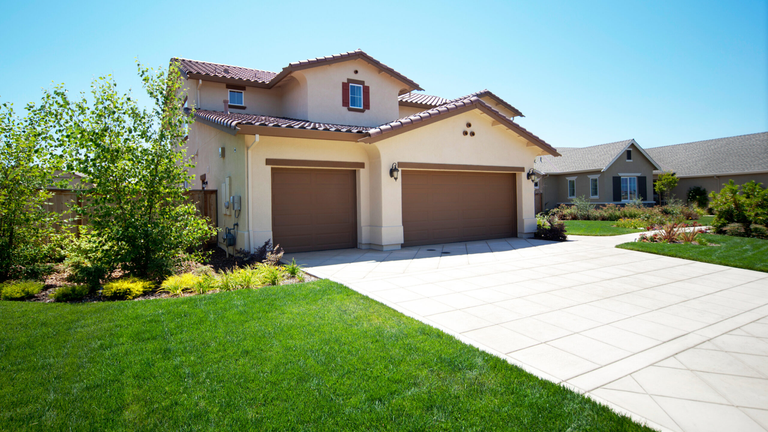Building the Perfect Driveway

Quality exterior design is essential for any new construction or renovation of an existing home. Although many people spend much time thinking about landscaping and colors, the driveway is an important feature.
The driveway is not only the primary entrance to your home, but also the primary load-bearer for all your vehicle traffic. It is essential that homeowners choose the right materials for their driveways and ensure they are enforced.
Types and Construction of Driveways
If soil is not reinforced naturally by roots, it can be weak and prone to erosion, puddling, or poor support. Natural earth cannot withstand even the most basic driveways. Driveways are constructed with multiple layers of support and materials to counter this.
The land must be prepared before the driveway layers can be constructed. Usually, the path is marked and cleared of all plants before being dug out.
This is a common mistake at this stage. Clearings too shallow will eventually result in soil erosion, instability, drainage problems, and soil erosion. This costly error can be avoided by ensuring that the clearing is done until hard earth or rock layers are reached.
Types and Costs of Driveways
There are many factors to consider when choosing the right driveway material for you. Budget and durability should be top priorities. Here is a quick comparison of the most common driveway replacement: gravel (or asphalt), concrete (or paver).
Gravel Driveways -
Gravel is the most economical option of all the alternatives. Materials are easy to obtain and cost-effective. Additionally, any maintenance required (such as filling gaps) is possible with minimal effort, cost and time. Gravel allows water to flow directly into the soil and is therefore the most environmentally friendly option.
Some of the drawbacks of gravel mirror its advantages. Gravel is not only easy to fill and maintain, but it also requires more care than any other driveway. Gravel driveways can be subject to weather erosion and settle as the foundation of the driveway becomes more compacted over time. This can lead to more frequent topping off and a less even overall surface.
Asphalt Driveways:
Asphalt is a petroleum-based substance that has many interesting characteristics. Asphalt is more expensive than gravel per square foot, but it's still cheaper than concrete or pavers. It's also much more durable than asphalt and can last up to 40 years.
Asphalt can cause severe problems in certain climates. Asphalt cracks under extreme heat and requires regular maintenance. The asphalt's material melts, making it gummy and pliable. Only then does it harden in a less stable state than it was when it started. Asphalt will require professional seal coating every 2-5years, which can be very inconvenient.
Paver Driveways and Concrete:
Concrete and paver driveways are very similar in material. Concrete can be more variable because the mix and curing process is affected by both the environment and your builder. Pavers are made in controlled environments that are uniform in their manufacturing and allowed to cure in optimal conditions.
Concrete driveways are the most durable and expensive options. Although this is a major selling point, many people cannot afford to pay the higher costs of concrete compared with other materials. Concrete and paver driveways can be expensive because of the high cost of materials. They also require a lot more labor and additional material.
Despite their differences, there is one thing that all three have in common: the benefits of additional reinforcement. Geotechnology is the best way to provide additional support for the project. More specifically, Geocells.
Why Driveways Must Be Reinforced
Before we can understand what geocells are, it is important to understand why driveways need reinforcement.
It is common to believe that driveways can be made of one type of material and are therefore strong enough to fulfill their purpose. Although this may seem obvious, it is not true.
Driveway materials are not solid. Driveways are made up of layers of aggregate stone and compacted soil. There are tiny air pockets throughout the driveway's foundation. These gaps are necessary because water cannot drain into the ground if it is not filled with gravel.
These gaps become "compacted" over time. This reduces the amount of gaps in the substrate, making it more difficult to drain water from heavy rains. Poor drainage can cause water to pool on or under the driveway. This can lead to many problems, including eroding materials and a sinking foundation.
Geocells are a great tool for this.
What's a Geocell?
Geocells are a subgroup of geotechnology that is used to add drainage and stability to the base layers of driveway.
Geocells, unlike geotextiles, which are flat, are rigid, vertical, pocket-like structures. These pockets are more attractive than their flat counterparts when building driveways.
Vertical Support
Geocells are upright and provide support for the substrate that is placed over them. This support aids the rock to maintain its form and prevents premature compacting.
Improved Drainage
Geocells protect the substrate from compaction by cradling it. Geocells allow the substrate to stay in its place longer and airflow between rocks to keep it there longer. This not only increases strength but also promotes drainage, allowing water to flow through the rock.
